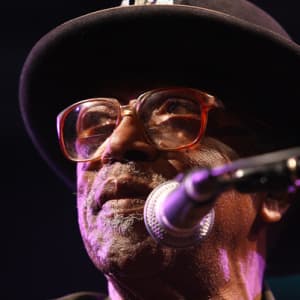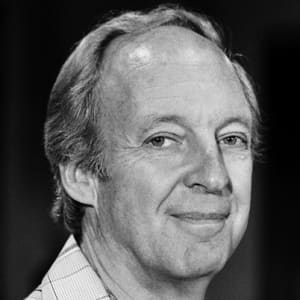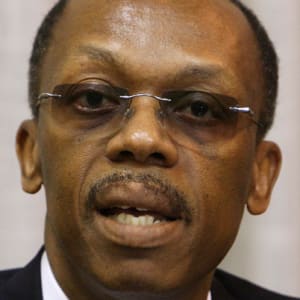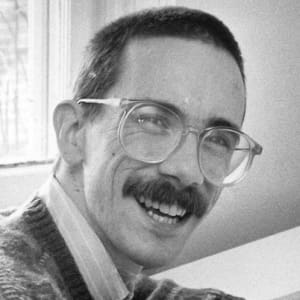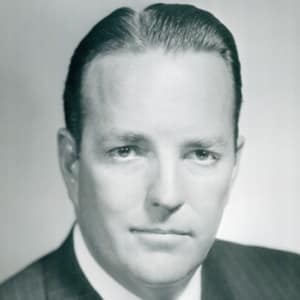
Randolph A. Hearst
Randolph A. Hearst was born a billionaire, but he helped transform the vast Hearst newspaper empire built by his father from a flagging company to a profitable private media company. However, the media melee over his daughter, Patty Hearst’s abduction by the Symbionese Liberation Army overshadowed other aspects of his life.
Synopsis
Although his accomplishments as a businessman held their own, Randolph A. Hearst's life would forever be eclipsed publicly by the looming shadow of his media mogul father, William Randolph Hearst, and his daughter, Patty Hearst's abduction by the Symbionese Liberation Army. He and his twin brother, David, were born on December 2, 1915, in New York City, to Hearst and his wife, Millicent. He followed the protocol of a dutiful heir, navigating the family business to success thought the 20th century.
Early Life and Career
Randolph Apperson Hearst and his twin brother, David, were born on December 2, 1915, in New York City, to newspaper mogul William Randolph Hearst and his wife, Millicent, a former chorus girl, making five sons in the family. Apperson was the maiden name of his paternal grandmother, Phoebe Apperson Hearst, with whom he and his brothers spent summer months, at her California estate at Wyntoon, until her death in 1919.
Randolph first attended prep school, the Lawrenceville School in Lawrenceville, New Jersey, before moving on to Harvard University.
He entered the family business not long after graduation, working first at the Atlanta Georgian. Though the talent for journalism in the family lay with his second brother, William Randolph Jr. (who later won a Pulitzer Prize for journalism), Randolph did meet his wife there, Catherine Wood Campbell; they married in 1938 and together would have five daughters.
Hearst took a break from the family business to serve in World War I from 1942 to 1945, achieving the rank of captain in the U.S. Army Air Force, Air Transport Command. He went on to work at the San Francisco Call-Bulletin and the Oakland Post-Enquirer before becoming publisher. As the business his father built began faltering at mid-century, Hearst was involved in decisions to cut the failing arms and refocus efforts on television and magazines, helping guide the company to a thriving media empire, and, what was even more rare, a privately held one. In 1973, he was appointed chairman of the Hearst board.
Defining Moments
Primarily a quiet and unassuming man, Randolph A. Hearst was more comfortable tending to the business concerns of the company rather that the more flashy public stance his father took.
But on February 4, 1974, he was unwittingly thrust into the spotlight when his middle daughter, Patricia, 19, was abducted by the Symbionese Liberation Army. The series of violent and bizarre events that unfurled over the ensuing year were stressful and confusing. Hearst was constantly at the center of the melee, as the domestic terrorists issued ultimatums and dangled Patty's voice and fears for her safety as power plays. Holding him responsible as the figurehead of corporate America and an "enemy of the people," the SLA ultimately demanded Hearst feed the poor of California in trade for the heiress—an unwieldy and rather broad demand that he nevertheless tried to meet.
There was a particular irony to the demand, as his mother, Millicent Hearst, had established the Free Milk Fund for Babies in 1921, which provided free milk to New York City's poor for many decades, but it is unlikely the SLA was aware of this. And though Hearst funded a $2 million enterprise called People in Need to hand out free food, the terrorists did not return his daughter.
Instead, Patty Hearst renounced her family, took the name Tania and held up a bank in San Francisco with her abductors the following year. Caught and convicted, Hearst hired high-profile lawyer F. Lee Bailey to argue in court that Patty had been brainwashed, but she was sentenced and served 21 months in jail—commuted from seven years by President Jimmy Carter.
Death and Legacy
The ordeal had taken its toll on the Hearst marriage, and the couple ultimately divorced. He remarried twice more before dying of a stroke on December 18, 2000, in New York City. He had just retired as Hearst chairman in 1996, and the year before had bought a sprawling mansion in Florida for his third wife, Veronica. For the first time in his life, Hearst had begun to enjoy a glittering social life under her auspices.
Hearst served on the boards of many charitable and cultural institutions and funded many educational scholarship programs, but regardless of any good he did, he will always be remembered in the shadow of his larger-than-life father and the abduction of his daughter.
